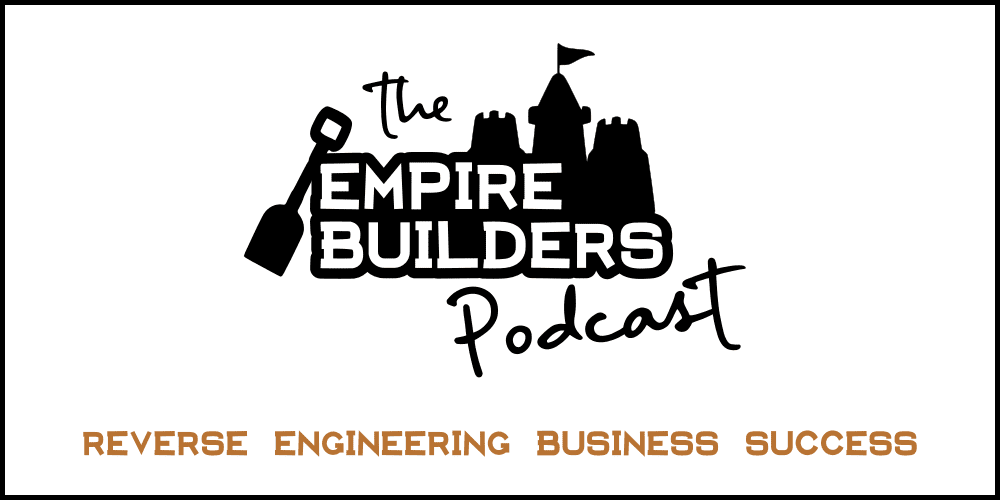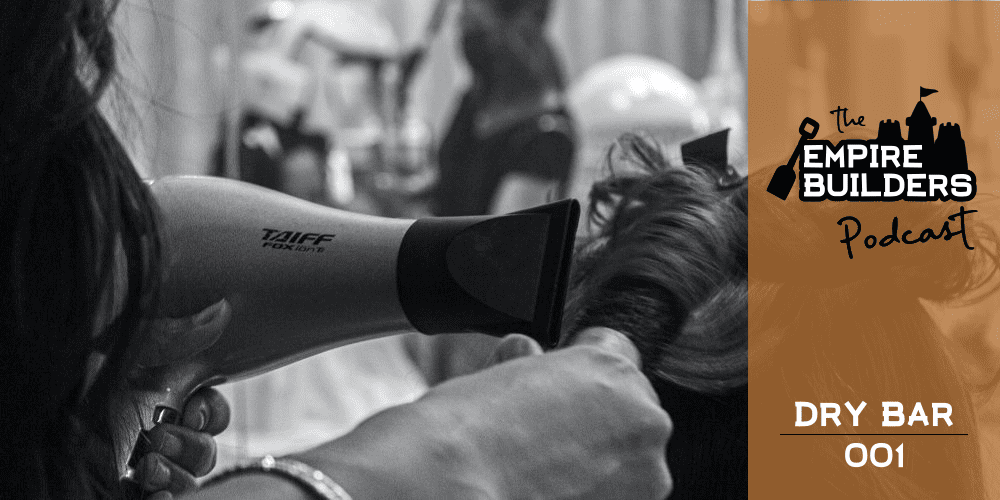Pearl farming became French Polynesia’s most significant export business because two yachts were docked next to one another, and the owners knew a guy.
Dave Young:
Welcome to the Empire Builders Podcast, teaching business owners the not so secret techniques that took famous businesses from mom and pop to major brands. Stephen Semple is a marketing consultant, story collector, and storyteller. I’m Steven’s sidekick and business partner Dave Young. Before we get into today’s episode, a word from our sponsor, which is … well, it’s us, but we’re highlighting ads we’ve written and produced for our clients. So here’s one of those.
[Tapper’s Jewelry Ad]
Dave Young:
Welcome to the Empire Builders Podcast. Dave Young here with Stephen Semple. When you told me the topic for today, my first thought was, “Okay, and I got nothing. I don’t know. I don’t know the story of this,” and my second thought was, “Wait. This is an empire? This is an empire?” We’re going to talk about the origin of black pearls.
Stephen Semple:
We’re going to talk about the origin of black pearls.
Dave Young:
This doesn’t even feel like an empire that I know of.
Stephen Semple:
Well, here’s the reason why I like to define it as an empire, is if we take a look at the economy of French Polynesia, which is where black pearls comes from, it is actually one of their biggest exports. In fact, it’s one of the biggest parts of their economy. I get French Polynesia is not a big country and not a huge economy, but when something becomes, by design, one of your largest parts of your economy, I kind of got to call that a little bit of a empire.
Dave Young:
I agree with you. I agree on that premise.
Stephen Semple:
So that’s where it comes from, and here’s the thing that’s really wild, is it really came on the scene in the mid 1970s. Before that, historically it was not a significant player in jewelry. If you were to find famous crowns or famous this, black pearls are hardly mentioned anywhere. They were not a thing. They were not a thing. They were not recognized as a gem. They were not something that was seen as being valuable and what you’re going to see is it became valuable and a very desirable piece of jewelry due to the work of three individuals; Salvador Assael, Jean-Claude Brouillet, and Harry Winston. Without these three people, black pearls may never have become a thing.
Dave Young:
Well, you mentioned Harry Winston, and you’ve got my attention.
Stephen Semple:
For those who don’t know who Harry Winston is, you’re a big deal when you are mentioned in the song, Diamonds are the Girl’s Best Friend. There’s a line in the song where it goes, “Tiffany’s, Cartier, Black Starr, Frost Gorham. Talk to me, Harry Winston, tell me all about it.” So when you are named in Diamonds is a Girl’s Best Friend sung by Marilyn Monroe and Madonna, you’re a big deal. You are a big deal. Anyway, going back to the origin, Jean-Claude is an entrepreneur and he started a bunch of hotels in Tahiti that were a huge success. But while doing this, he learned about black pearls. The oysters that produce black pearls are only found in a small area in Tahiti. They’re not found anywhere else in the world.
Initially, these oysters were desired for the shells because of the color of the Mother of Pearl. They produced this range of colors from iridescent green to purples to pinks and charcoal grays and black. That’s what was desirable in them. These oysters were farmed almost to extinction. Then in the ’60s, they started harvesting them, but it took a while to get the techniques right for it. Initially, the quality of the harvested pearls were not consistent and then a chance meeting in 1973, 1973, and St. Tropez, Jean-Claude Brouillet and Salvador Assael’s yachts happened to be docked next to each other.And it turns out Salvador Assael is a well known pearl dealer. He later goes on to become dubbed the Pearl King. The two of them get talking about these black pearls and they partner together, they buy the atoll and they start pearl farming.
They brought in Japanese pearl experts that guide the farms to bring the quality up, but they still needed a market. By 1978, they had enough high quality pearls to make some perfect necklaces and Salvador took a strand to his friend Harry Winston on Fifth Avenue and convinced him to sell it. Harry did this. He put these pearls in a window next to diamonds, rubies and emeralds. Because here’s what he understood, that these gems would have a halo effect. The moment you show that necklace in that window in that company, that signals to the world, “These are valuable,” and he sold out in a week.
Dave Young:
He could have put a bowl of diamond shreddies in the window and it would’ve …
Stephen Semple:
So Harry Winston used his influence, but also this idea of halo effect to make these really valuable. Because keep in mind, no one knew what black pearls were at the time and Harry Winston went on to quickly sell the rest of the shipment. The other thing that Salvador did is he went on to lobby the GIA, the Gem Association, to recognize black pearls as a gem and he convinced them to recognize as a gem and this inspired them to launch a marketing campaign A New Gem is Born. They ran these ads in all the very high end hoity-toity to high fashion magazines, because again, they knew the halo effect. That type of advertising would work because your ads are now appearing next to ads for Rolex and Tiffany’s, things along that lines. Really what they did was they took a page out of the De Beer’s playbook, really, if you look at it.
What were the couple of things that De Beers did? De Beers said control supply. Well, they could control supply because the only atoll that black pearls comes from they now own. They controlled the supply, they controlled the quality, but what they also did is they created desire with the halo effect.
Dave Young:
Stay tuned. We’re going to wrap up this story and tell you how to apply this lesson to your business right after this.
[Empire Builders Ad]
Dave Young:
Let’s pick up our story where we left off, and trust me, you haven’t missed a thing.
Stephen Semple:
If we go back to their early days of De Beers, diamonds were not a thing in engagement. If we remember that episode, go back and listen to it. It was not the main thing. It was like 105 or 15% of the population would give diamonds as an engagement ring, where today it’s 80%. What did they do in the early days? They created ads that were illustrated by famous artists by Salvador Dali, and people along that lines, because what did they know? The halo effect. If Dali creates this ad for this diamond, it’s special. Harry Winston had done this several times in his career. When we go back to the days when Cadillac … Remember, Cadillac used to be a really big deal. If you said, “Oh, that’s the Cadillac option,” that meant it was the best, right? Well, if you go back in the early days, Harry Winston had ads where he had jewelry next to Cadillacs. He would team up with Cadillac and they would show the jewelry and Cadillac liked it as well because it also gave that halo effect back and forth.
Dave Young:
Yeah, absolutely.
Stephen Semple:
But halo effect is a thing. This gets me thinking about when you’re promoting a product or a service, you can’t ignore what’s going on around you. This is where we often talk about high visibility locations, but also locations in prestige places. If you’re selling a prestige product, actually helps you sell that prestige product because of the halo effect of being in that location, being in that luxury mall if you’re selling luxury items. What magazine you pick, it’s not about, oh, who are the readers of that magazine? Sometimes what you have to look at is, also as important, what are the other advertisements that are going on around it that can actually also impact how you are seen, felt, heard.
Dave Young:
Isn’t it amazing what can happen when two wealthy guys park their yachts next to each other?
Stephen Semple:
Well, that’s it, right? Just happen to park their yachts next to each other. But two wealthy, smart guys. You could picture that. “Here, let’s have a drink. Oh, I came across these black …” “Oh, black pearls? Oh, tell me more about …” “Oh Jesus, I’ve got a …” You could see immediately they were like,” I’ve got a plan. Here’s what we’ve got to do. We’ve got to buy the atoll. We got to raise the quality. I got to talk to my buddy Harry. We’re going to do this, this, this and we’re going to turn this into a thing that is going to be huge and great and suddenly becomes one of the largest exports of the French Polynesia.” I would love to have been sitting having drinks with those guys as they were dreaming this thing up. You know with people like that, by the end of dinner, the offer was being drafted up for buying the atoll, right?
Dave Young:
Oh, sure. Kicking everybody else off of it.
Stephen Semple:
But it’s also this amazing making something out of nothing. Yes, they were beautiful and yes, they were rare, but they weren’t worth anything. They made it into a thing consciously. It wasn’t by accident. This was manufactured. They knew what they knew. They knew what they were doing and they executed a plan and really what they did is they followed the De Beers playbook. They knew this would work because they saw this playbook and they would’ve been familiar with it. They’re in the jewelry business. They saw this playbook, they knew it would work. Harry Winston knew it would work. Salvador knew it would work. You got to look at it and go, “Wow, that was really, really amazing.” Grab the bull by the horns, executed the plan and turned it into a thing.
Dave Young:
They knew they were going to create something amazing and that they controlled the supply of it and used the same playbook that made diamonds special. You get Harry Winston involved, that halo effect, brilliance all the way around on this. What a move.
Stephen Semple:
When I came across this, I was like, “That’s a pretty cool story,” and today black pearls are very desired. Very, very desired.
Dave Young:
Another cool story. Thank you very much, Stephen. Appreciate you sharing this.
Stephen Semple:
Thanks, David.
Dave Young:
Thanks for listening to the podcast. Please share us. Subscribe on your favorite podcast app and leave us a big fat juicy five star rating and review. If you have any questions about this or any other podcast episode, email to [email protected].







